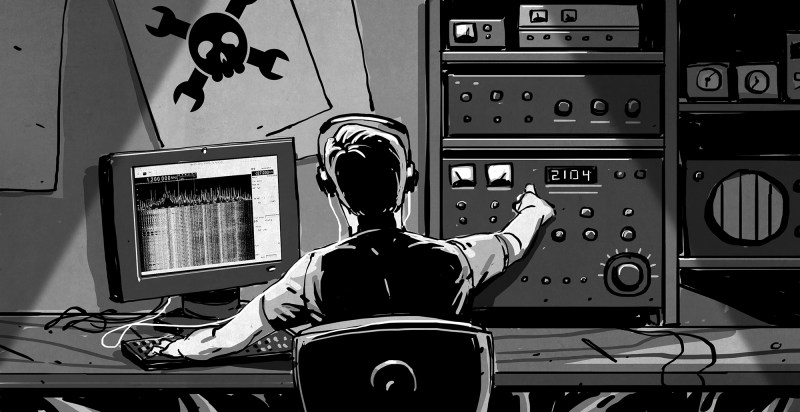

Amateur radio is the ultimate hacker’s hobby. You can design, build, and put on the air your own high power transceivers. And with this homemade gear you are able to reach out directly, not relying on any infrastructure whatsoever, to connect with people all over the world. It is a thrilling experience to communicate with that long distance station using equipment you created, where you know at that instant what every single transistor is doing as you key down the mic.
In a previous post I described how SSB radio equipment worked and provided an example of a single-band 20m SSB transceiver. In this post I will discuss a multi-band SSB transceiver, an entire homemade amateur station including amplifiers, and conclude with software defined radio (SDR) that you can make in one weekend.
My second SSB transceiver was dual-band spanning both 6m and 10m wavelengths. I built this radio as part of the ARRL ‘home brew challenge 3’. This followed the same block diagrams as those shown in the previous post except that the two frequency bands of interest spanned one whole octave at 28 MHz and 54 MHz, resulting in additional switching and a wider bandwidth VFO.
Similar fabrication techniques were used, resulting in an old-school appearance.
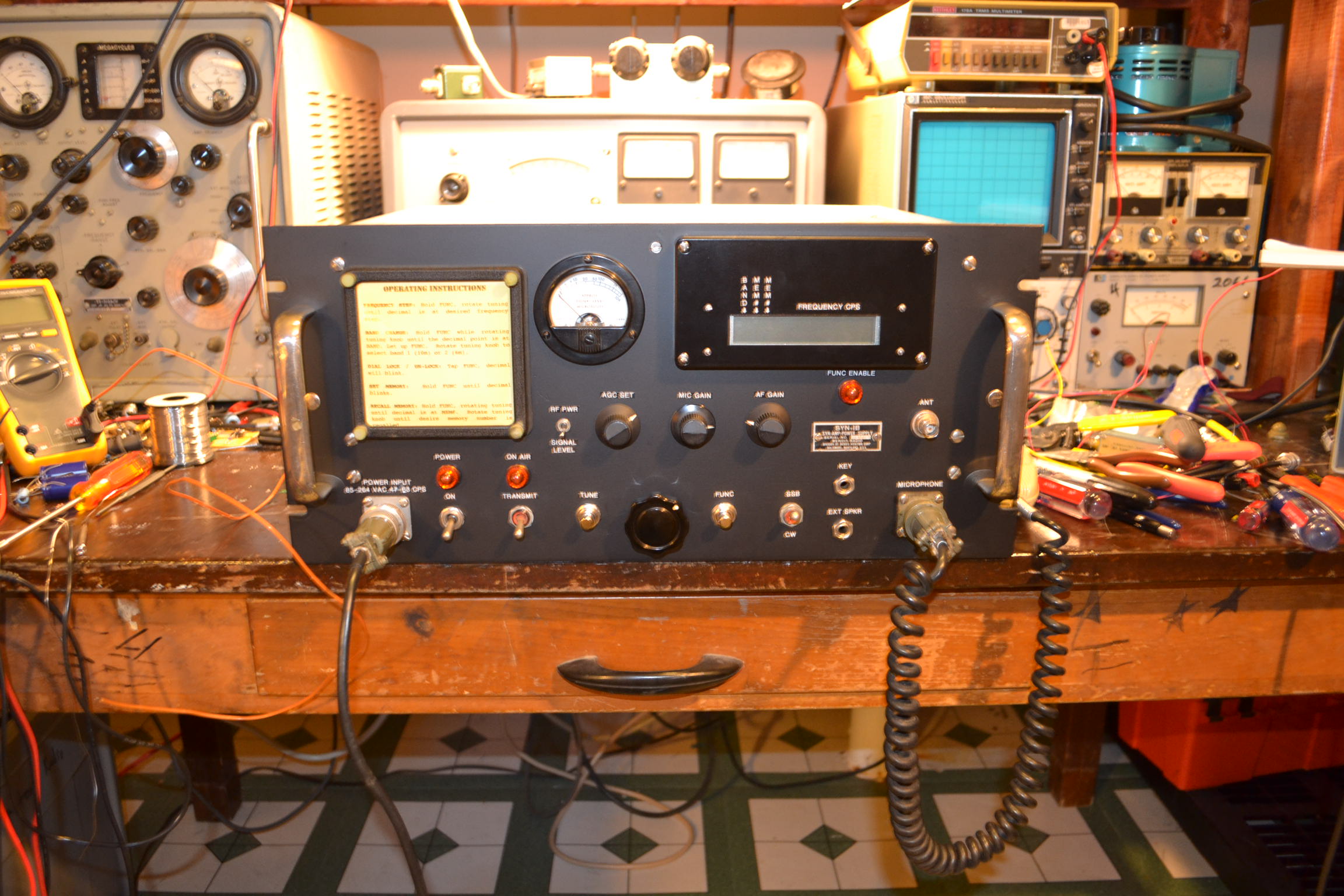


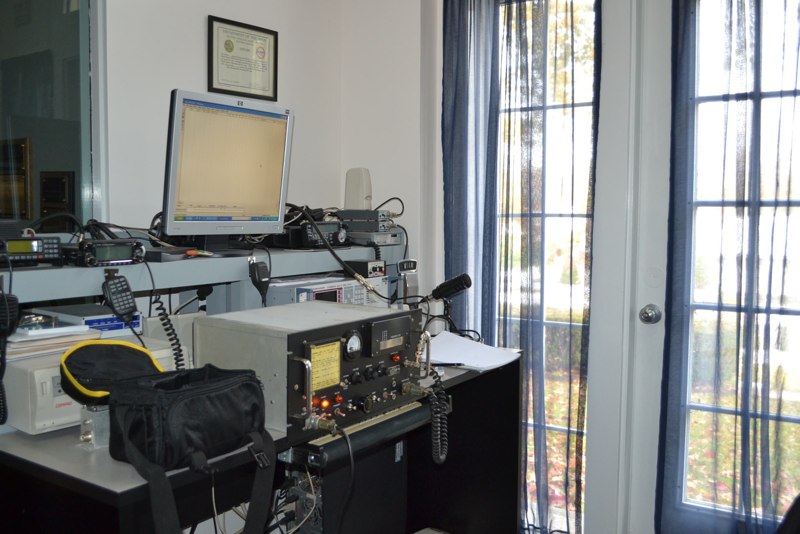
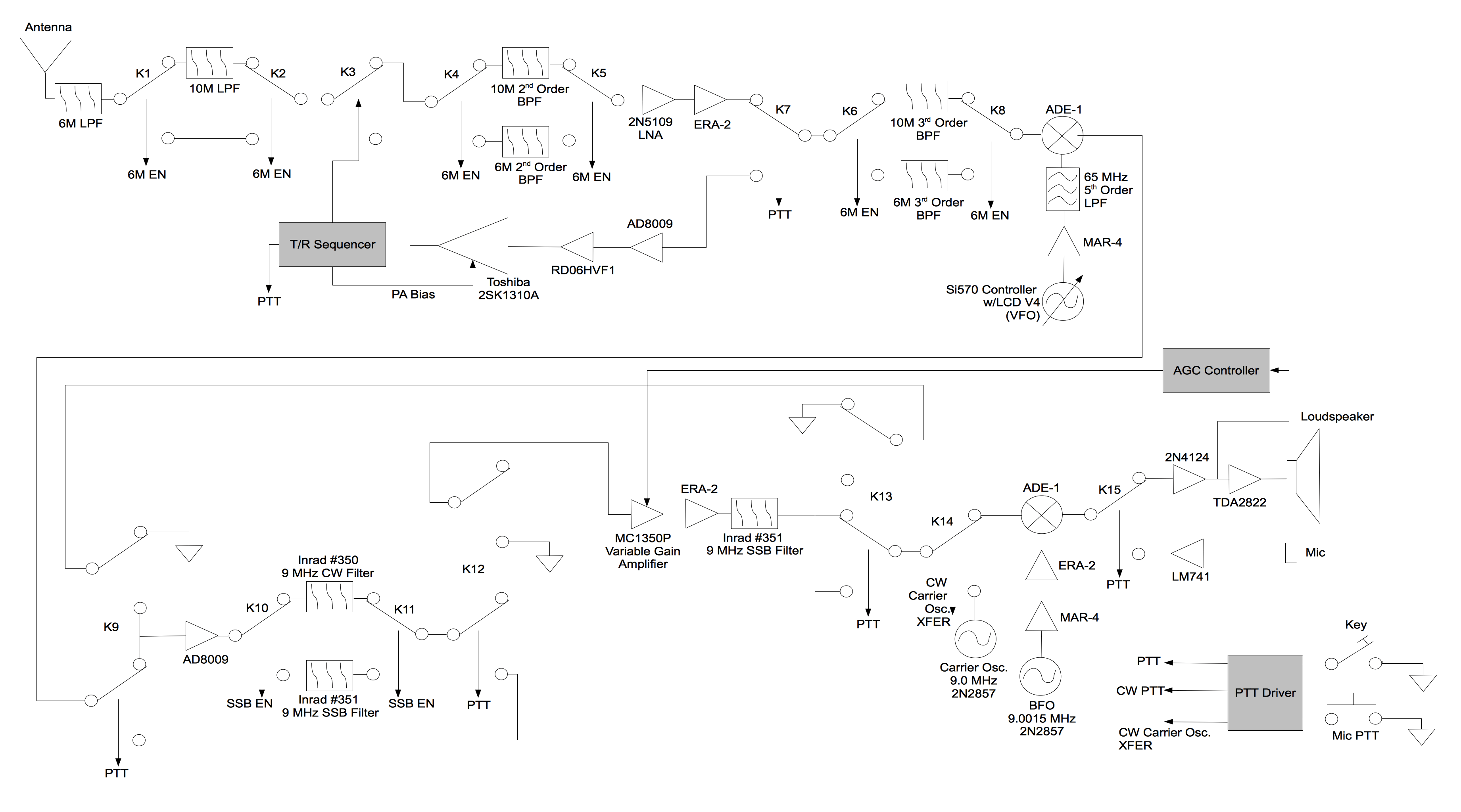
Schematics and details are found in the full article in March 2013 QST, and design notes here. The interesting thing about this radio is that its VFO, power amplifier, and front-end cover all HF bands up to the VHF band 2m. This radio could quite easily be made into an all-band radio if the filters were built-out.
The most impressive home built station I’ve ever seen was by Mark Mandelkern, K5AM. Mark published details of all this gear in QEX magazine back in the late 1990s and early 2000s, with schematics, block diagrams, and more are available here.

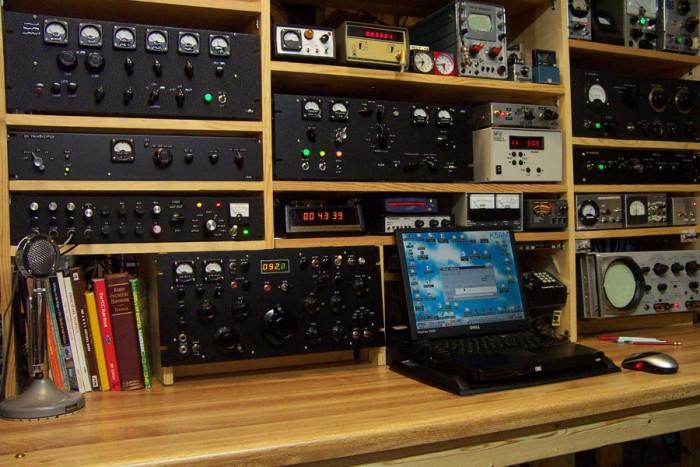

In Mark’s Own Words
“All the gear was newly designed and built from scratch. But I was not about to reinvent the superheterodyne. Each project begins with a thorough study of the handbooks and relevant magazine articles. I glean ideas from all previous builders, to whom many thanks are due. Design means selecting and choosing the best ideas which will help produce the intended results. Individual circuits are described in the handbooks; the real design work is to combine them into a complete functioning unit. Getting a whole station built in a finite interval of time meant using mostly tried-and-true methods, and setting to work without trying to invent a new circuit for each stage.”
Others who have made their own multi and single-band SSB transceivers:
And others suggest searching on YouTube for on-air demos of some of these radios or post in the comments section.
There are other methods to implement SSB equipment, including direct-conversion using phasing (either digital or analog). In this architecture, an I/Q image rejection mixer is used to mix up (for transmit) or down (for receive) to directly modulate or demodulate SSB signals. The back end after the IQ mixer can be implemented with either op-amps or digitization. This is one of the common architectures for early SSB transmitters and today this is the preferred architecture for entry-level software defined radio (SDR) receivers and transmitters.


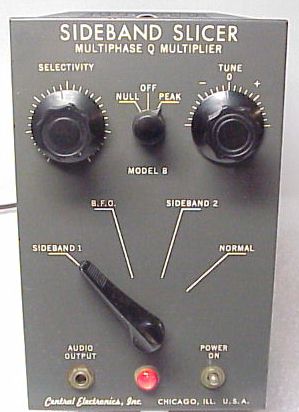
SDR might be a great option for those of you who are more interested in building a kit or writing code instead of building a scratch-built design. In many cases the software is already written. And let’s face it, SDR is the future of radio by pushing what was previously analog circuitry into the digital domain, which trades CPU cycles for reductions in analog circuit complexity.
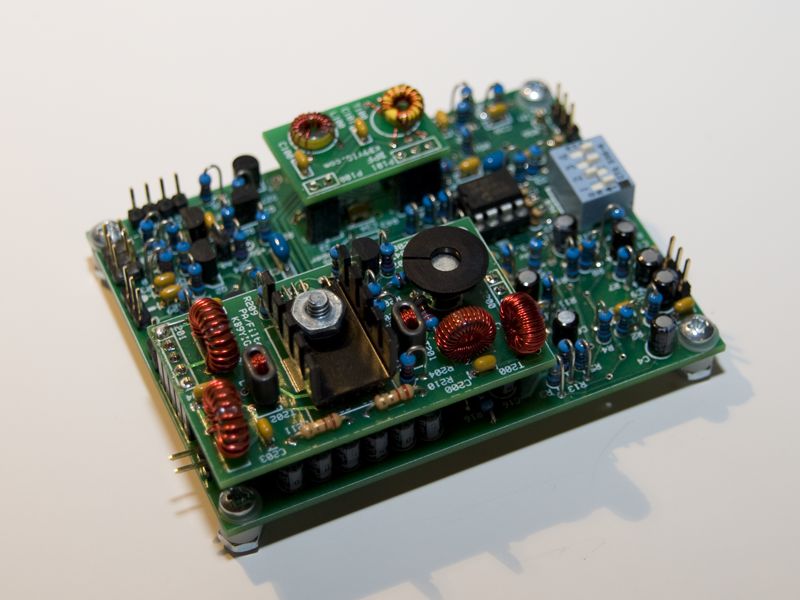
There are many SDR kits available today, including those by AE9RB, the Picastar, or the Heremes. You can also buy the commercialized version or can mix and match the exciter, PA, and filter boards. Recently, an SDR was developed using a teensy. Check out hackrf or hackrfblue for the professional to convert to amateur use with the addition of a good power amplifier and some filters.
The best performing software-defined (or DSP) receivers use a hybrid architecture mixing the best practices of analog design with an SDR back-end (sometimes known as a ‘roofing filter‘). This provides the high-dynamic range architecture of an analog radio with the flexibility of a software defined radio. This is why the Elecraft K3 is a top performing radio (it is also available as a kit).
The only way to get started is to build something. Start small, check out the QRP community, try making a single-conversion receiver, try an entry-level SDR, and finally move up to something with a crystal IF filter. Borrow and scale circuits from books such as these:
Or leverage complete ICs and modules like those from Mini-Circuits. There is nothing like making that first long distance contact on radio gear you created from scratch.
Acknowledgement
My cousin, Juliet Hurley, MBA, MSF, MAC for type editing this post.
Author Bio
Gregory L. Charvat only operates radio equipment he builds from scratch, is the author of Small and Short-Range Radar Systems, co-founder of Hyperfine Research Inc., Butterfly Network Inc. (both of which are 4catalyzer companies), visiting research scientist at Camera Culture Group Massachusetts Institute of Technology Media Lab, editor of the Gregory L. Charvat Series on Practical Approaches to Electrical Engineering, and guest commentator on CNN, CBS, Sky News, and others. He was a technical staff member at MIT Lincoln Laboratory where his work on through-wall radar won best paper at the 2010 MSS Tri-Services Radar Symposium and is an MIT Office of the Provost 2011 research highlight. He has taught short radar courses at MIT where his Build a Small Radar course was the top-ranked MIT professional education course in 2011 and has become widely adopted by other universities, laboratories, and private organizations. Starting at an Early Age, Greg developed numerous radar systems, rail SAR imaging sensors, phased-array radar systems; holds several patents; and has developed many other sensors and radio and audio equipment. He has authored numerous publications and has received press for his work. Greg earned a Ph.D in electrical engineering in 2007, an MSEE in 2003, and a BSEE in 2002 from Michigan State University, and is a senior member of the IEEE where he serves on the steering committee for the 2010, 2013, and 2016 IEEE International Symposium on Phased Array Systems and Technology and chaired the IEEE AP-S Boston Chapter from 2010-2011.



